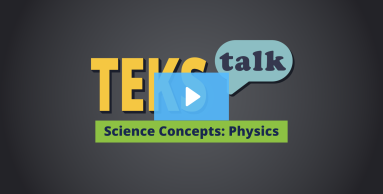
Knowledge and Skills Statement
Research
Wilhelm, Jennifer, and Jere Confrey. "Designing Project-Enhanced Environments: Students Investigate Waves and Sound." The Science Teacher 72, no. 9 (2005): 42-45. https://www.jstor.org/stable/i24138964
Summary: The concept of waves is fundamental due to its occurrence throughout the natural world (water, sound, and electromagnetic waves). Because the concept occurs in so many places, students come to the classroom with prior knowledge, as well as misconceptions, about waves. Students have misconceptions about what is waving in a wave, what properties of the medium determine wave speed, and how waves interact with each other (Wittmann 1996).
Research
Wittmann, Michael, Richard N.Steinberg, and Edward F. Redish. "Understanding and Affecting Student Reasoning about Sound Waves." International Journal of Science Education 25, no. 8 (2003): 991–1013. https://doi.org/10.1080/09500690305024
https://arxiv.org/pdf/physics/0207031
Summary: Student learning of sound waves can be helped through the creation of group-learning classroom materials whose development and design rely on explicit investigations into student understanding. We describe how students can use multiple sets of resources in their thinking, and raise questions that should be considered by both instructors and researchers.
